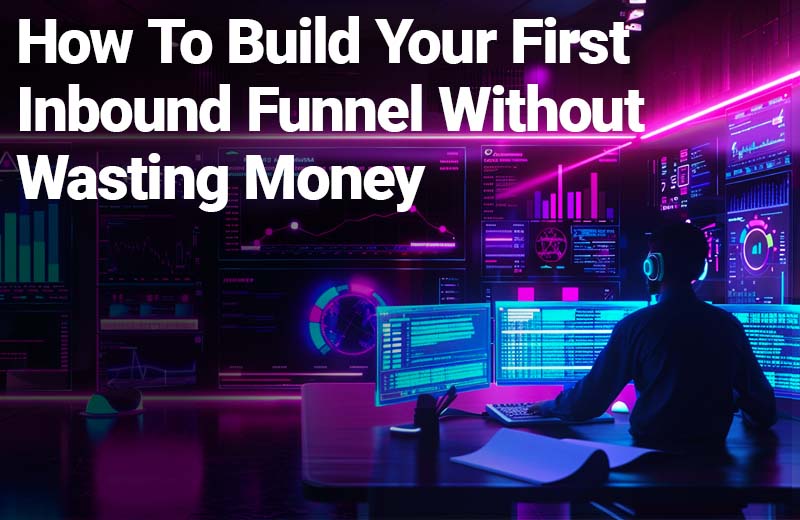Building a Strong Inbound Marketing Funnel for Business Growth

Building a Strong Inbound Marketing Funnel for Business Growth
As an experienced marketer with over a decade of expertise, I understand the importance of a successful inbound marketing funnel for driving leads and sales. In this blog post, I'll guide you through the essential steps to create an effective inbound marketing funnel that resonates with your target audience. Whether you're an entrepreneur or a business owner, this comprehensive approach will help you establish strong brand sentiment and foster meaningful relationships with your customers.
Understanding the Inbound Marketing Funnel
An inbound marketing funnel is a strategy that focuses on building lasting connections with consumers, prospects, and customers. Unlike outbound or paid advertising methods, this approach takes time to develop but generates a deeper level of trust and brand loyalty. It mimics forming friendships, starting with getting to know your audience, making them like you, earning their trust, and eventually turning them into loyal customers.
Know Me (Attract Stage)
In this initial stage, your goal is to attract your target audience by providing valuable content and engaging conversations. Position yourself as a trusted advisor who genuinely understands their needs and desires.
Like Me (Consideration Stage)
At the consideration stage, address their pain points and offer solutions that align with their goals. Focus on providing helpful information rather than pushing for a sale. This builds credibility and keeps the conversation going.
Trust Me (Decision Stage)
Once your audience is ready to purchase, addressing any objections is crucial. Ensure your solutions fit their needs perfectly, solidifying their trust in your brand.
Buy Me (Delivery Stage)
When customers are ready to buy, it's time to deliver on your promises. Fulfill the expectations you've set through your content, ensuring a seamless experience for them.
Marry Me (Nurture Stage)
Even after a purchase, it's essential to continue nurturing the relationship. Consistently deliver value, actively listen to feedback, provide excellent customer support, and exceed expectations. This approach will encourage customers to refer others to your business.
Defining Your Target Audience
To create an effective inbound marketing funnel, you must first define your target audience. Consider the type of brand you want to build and the audience you ideally want to work with. Look for clients who align with your desired payment rates and are easy to work with, as they are more likely to refer others to your business.
Identifying Pain Points
Once you've identified your target audience, delve into their specific problems and pain points. Take the time to understand their unique challenges, as this will allow you to address their needs more effectively. For example, a 34-year-old single white female with two kids will have different pain points when moving compared to a single 34-year-old white female with no kids.
Creating Compelling Content Topics
To generate engaging content ideas, focus on your identified pain points. Research these topics using platforms like Google suggested search, YouTube suggested search, and relevant forums like Reddit or 4chan. By understanding what real people want to hear, you can provide targeted and valuable content that resonates with your audience.
Crafting Content for Different Platforms
Tailor your content to suit your platform. Each platform has its own culture and content preferences. Avoid creating long-form content for platforms like Twitter, and instead, adapt your content to fit the specific platform requirements. For example, consider making long-form content and breaking it into digestible chunks for platforms like podcasts, blog posts, YouTube videos, Instagram Reels, TikToks, YouTube shorts, and Twitter.
Setting Up Your System
Once you've created compelling content, you must map out how your customers will flow through it. Consider how they will interact with your social media posts, visit your website, read your blog, and take further action. Set up mechanisms such as email capture forms or contact forms to maintain communication with prospects. Implementing a Customer Relationship Management System (CRM) will help you manage and nurture these relationships effectively.
Conclusion
Building a robust inbound marketing funnel takes time and consistency, but it's a highly effective long-term strategy for driving sales and fostering customer loyalty. Remember that immediate return on investment may not be apparent, but the value lies in cultivating lasting relationships with your audience. By implementing the steps outlined in this blog post, you'll position yourself as a marketing expert while providing valuable insights to your entrepreneurial-minded audience.



